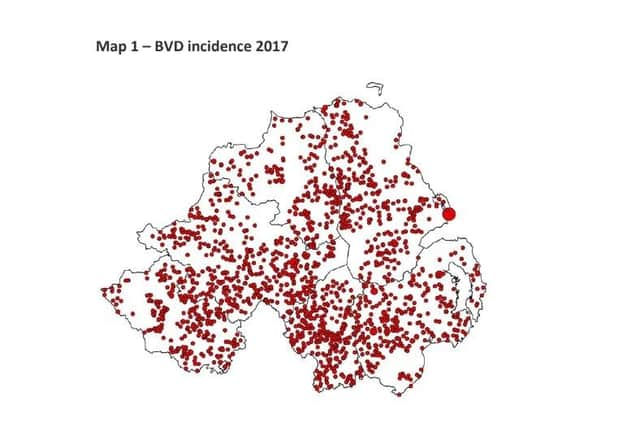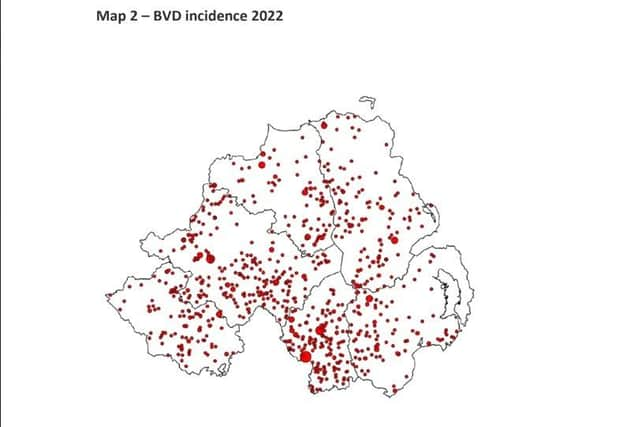Latest BVD maps demonstrate marked progress
and live on Freeview channel 276
These maps show that there has been a marked decline in the incidence of BVD since the compulsory programme was introduced. For the first time, there are no recorded retained BVD Positives in a county, Co Antrim.
Progress may be seen in the decrease in the number of herds where BVD Positive results were disclosed, as well as in the intensity of individual outbreaks, when 2017 and 2022 maps are compared.
Advertisement
Advertisement
The rolling 12-month animal level incidence recorded at March 2023 is the lowest seen in the programme to date, at 0.240 per cent. This represents a decline of 64 per cent compared to the level at the end of the first year of the compulsory programme. Herd level incidence is also at a new low, with a similar comparison demonstrating a downturn of over two thirds.


Newry DVO had the highest number of herd breakdowns in 2022, while the highest animal incidence was in Armagh DVO. The 2022 map suggests that there are significant localised pockets of disease in Co Armagh, and in the Dungannon and West Tyrone areas.
Herd owners should be very aware of BVD risks from herds with a current or recent history of BVD. A number of farms have seen multiple Persistently Infected (PI) animals disclosed on testing – BVD PIs should be disposed of at the earliest opportunity and steps put in place to stamp out any residual virus in these herds.
An AHWNI spokesperson said: “The gains made are encouraging and have been hard won; farmer compliance has been excellent overall and it has taken a significant additional effort to encourage maximum compliance with the requirement to isolate and the recommendation to voluntarily cull PI cattle.
Advertisement
Advertisement
“Purchase of stock from herds with current BVD infection is believed to be one of the most significant obstacles hindering the progress of the scheme, due to a lack of BVD herd restrictions and a lack of BVD herd level statuses that would allow risk-based trading.”


The proposed introduction of BVD herd restrictions will assist the programme, and it is widely recognised that further measures are needed in order to achieve industry’s aim of the timely eradication of BVD from the NI cattle population.